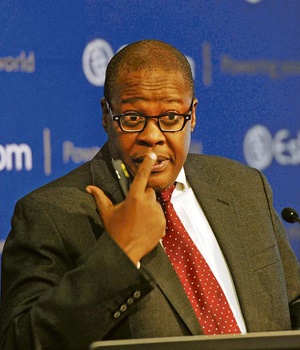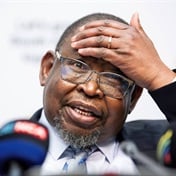
The billions of rands Eskom wants to recoup from consumers to keep the lights on “is nothing compared with the cost of not doing it”, claimed acting CEO Brian Molefe this week.
The implied threat was that Eskom would simply let load shedding reign if consumers did not cough up for the cost of emergency power.
Eskom wants about R16.8 billion extra per year to buy diesel and power from independent power producers. This is supposed to be the only way to perform long-overdue maintenance on power stations without taking load shedding to a whole new level.
The money will be spent regardless of whether the National Energy Regulator of SA (Nersa) grants the tariffs, according to Molefe. “Even if it is not granted, we will claw it back,” he said.
There have been a number of estimates of what load shedding costs the economy. National Treasury has cited R15 per kilowatt-hour while independent economists have in the past used figures as high as R100 per kWh.
Last month, Nersa released Eskom’s method for calculating the damage done by power interruptions – the cost of unserved energy – for public comments.
Public hearings in September will assess the company’s method, which gives a “total economic effect” of R77 per kWh. Some analysts simply multiply this number by the amount of load shedding, so a stage-one shedding of 1 000MW would cost about R77 million per hour.
Considering diesel generators cost about R2.30 per kWh, the equation is a complete no-brainer, even if the damage assessment is overstated 20 times.
The only question is who should pay for it.
WHAT IS ESKOM ASKING FOR?
Eskom launched a selective reopener of Multi-year Price Determination 3 (MYPD3) with Nersa in April, which sets the annual tariff hikes for three years, namely in July 2015, 2016 and 2017.
Eskom thinks the 12.7% hike it is already allowed to implement this year is not enough.
Instead, it says it needs an extra:
. R11 billion per year for its diesel generators (6.8% tariff hike);
. R5.8 billion per year for short-term contracts with independent power producers, the biggest of which are Sasol, Mondi and the City of Tshwane (3.3% tariff hike); and
. 2c per kWh to cover the increased environmental levy announced by Finance Minister Nhlanhla Nene in this year’s budget, which Eskom wants to pass straight through to customers (2.5% tariff hike).
The call for submissions on Eskom’s application leading up to this week’s hearings has drawn a barrage of criticism from across the political spectrum, including unions, employer groups, NGOs and academics.
Local electricity sector commentator Chris Yelland even accused Eskom of coming up with “heavily overstated” cost estimates to maximise the tariffs it is asking Nersa for.
Another submission to Nersa, from former economic adviser to Business Unity SA Raymond Parsons and two academic colleagues, raised the spectre of a tariff recidivism where Eskom makes a mockery of the whole multiyear price determination system by constantly requesting more money.
Eskom is in effect being paid to screw up, argue the professors.
According to Parsons and his colleagues, South Africa faces a vicious cycle where higher tariffs cause higher tariffs.
The higher Eskom’s prices go, the less electricity actually gets sold. This trend has been visible since 2008, with South African power use currently sitting at lower levels than a decade ago.
In his submission, Yelland argues that the extra 12.6% tariff hike Eskom wants should only be 3.6%. The reason being that diesel and independent power producer power is only necessary because Medupi is late and many other plants are constantly broken.
Apart from this being Eskom’s fault and not something the public should pay for, that also means Eskom is inflating the costs it wants South Africans to cover, Yelland claims.
Eskom would spend money on power from Medupi anyway and that was already reckoned into the existing tariff increases. Logically, Eskom has to subtract the R1 per kWh that Medupi power would’ve cost from the price of the emergency power it is buying instead, argues Yelland.
The same goes for the delayed Kusile and Ingula pump storage. That gives a defensible extra tariff hike of 3.6% instead of 12.6%, according to Yelland’s calculations.
Eskom’s plan to pass through the new 2c per kWh environmental levy is also dodgy, says Yelland. Treasury hasn’t actually implemented it, so there is nothing for Eskom to pass on, he says.
Labour federation Cosatu’s submission puts the onus on government to fund Eskom and argues that it should be industrial tariffs for companies that carry any new burdens instead of households. It says “the multiyear price determination system is facing a credibility crisis because, since its inception, Eskom has been able to get additional increases before the end of the determination period”.
The National Union of Metalworkers of SA, now the largest private sector union in the country, has accused Eskom of inflating the cost of diesel use underpinning its application. It is demanding a better breakdown of exactly how much Eskom intends to use its diesel generators.




 Publications
Publications
 Partners
Partners








